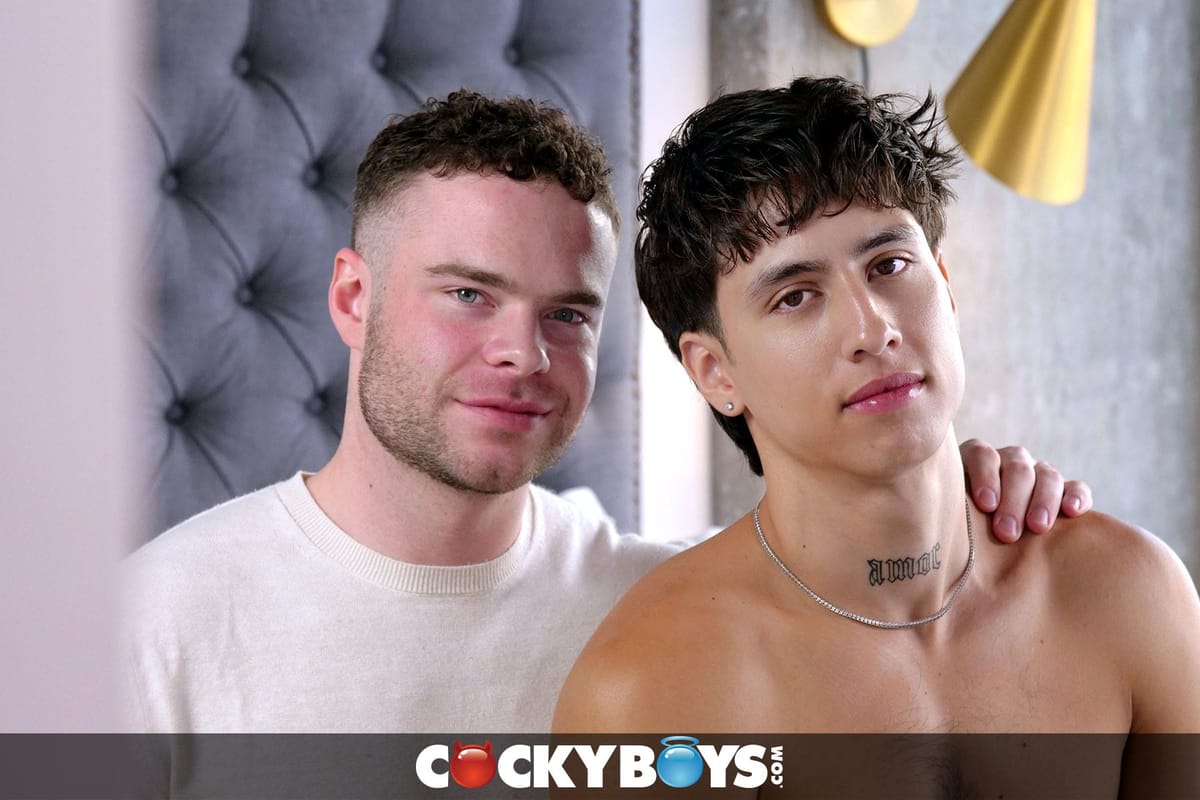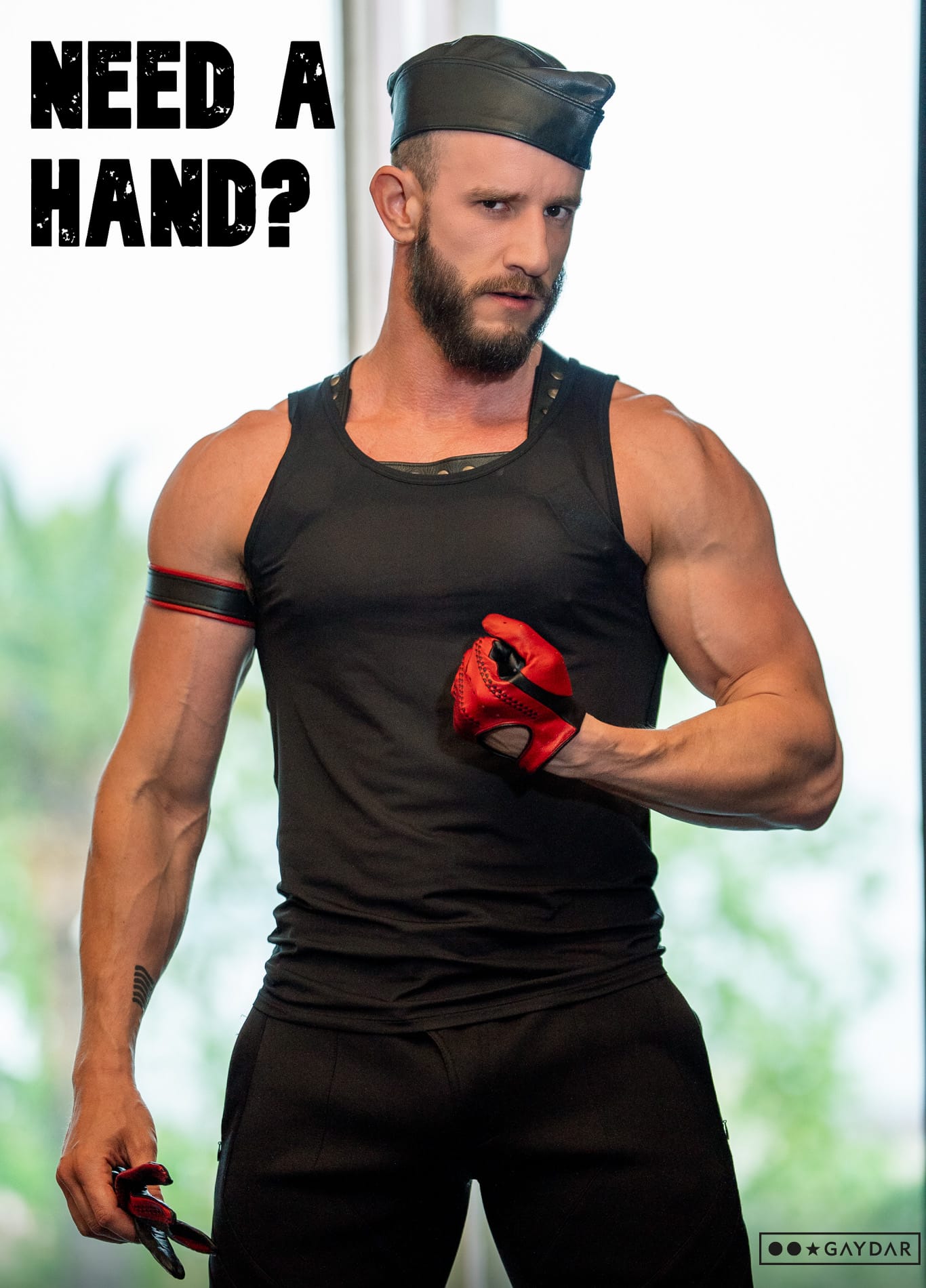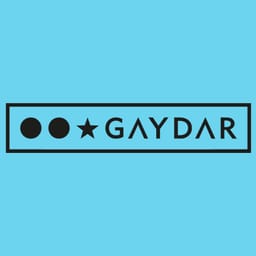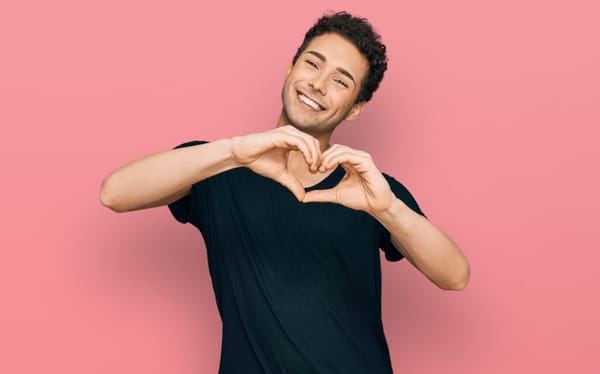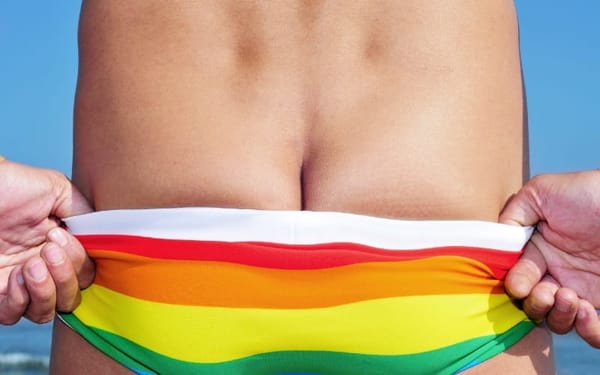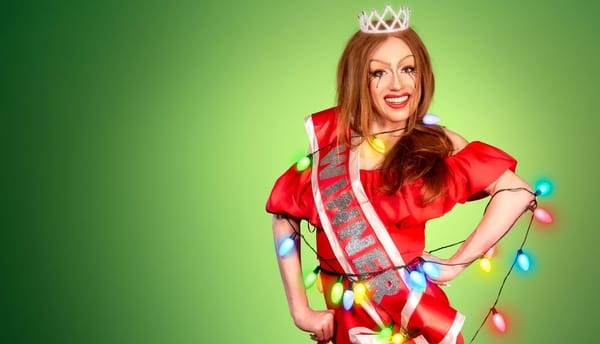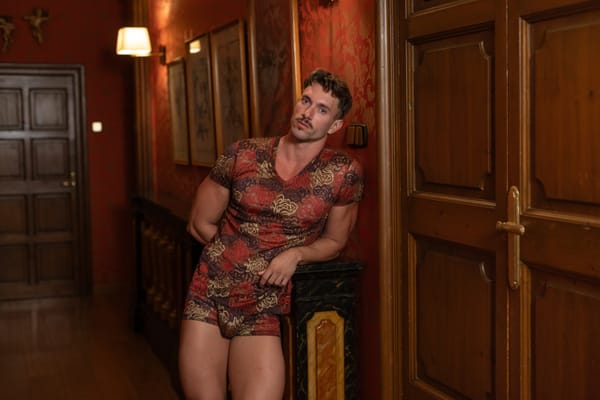ArtCrush: Martin Kámen
An unapologetically queer and sex-positive photographer.
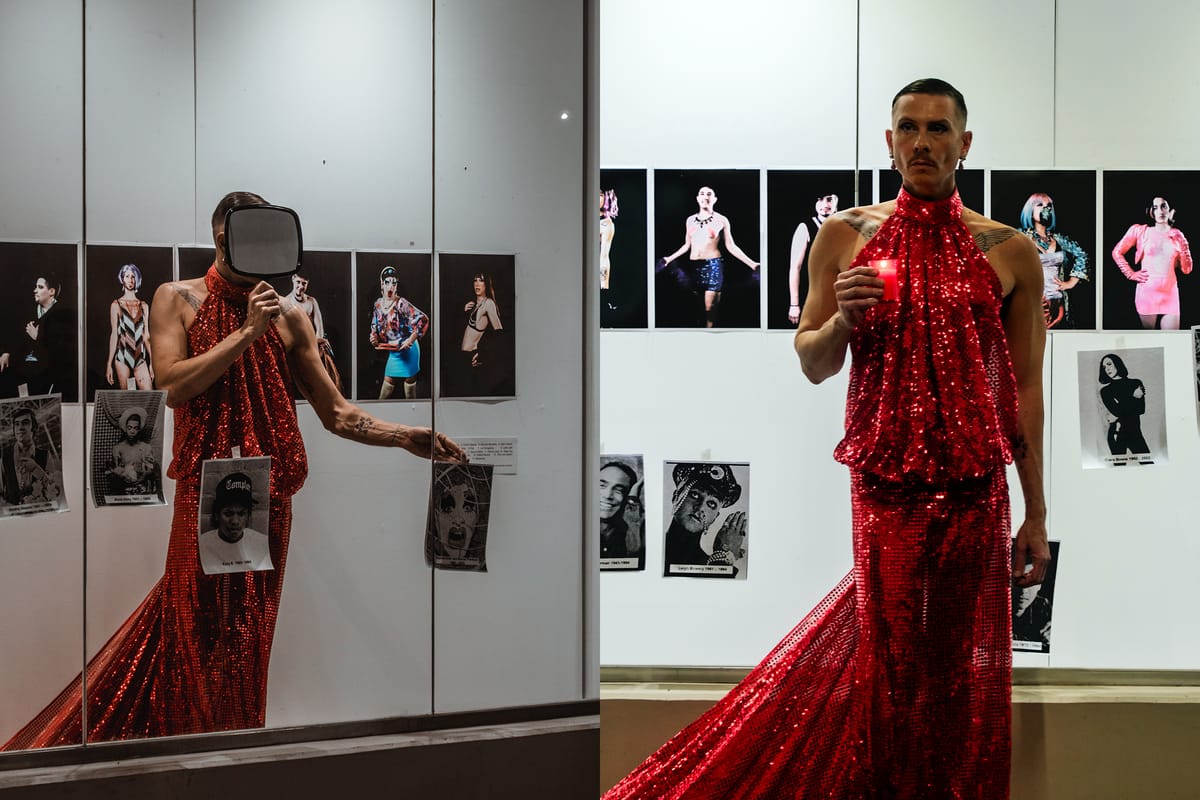
Martin Kámen is a photographer and curator.
We caught up with Martin to talk about his work.
You've returned to the world of academic research 20 years after completing your diploma - why is now the right time to focus on your research?
It is definitely different to do a PhD right after finishing your master's degree or to start doing a PhD in your forties.
In my case, there were several reasons for this. First of all, when I approached my potential mentor twenty years ago with more or less the same topic for my dissertation, no one wanted to do it with me. The time and institution such as the Academy of Fine Arts in Prague were not yet inclined to the topics and issues of the LGBTQIA+ community in the post-communist Czech Republic. Therefore at that time, I gave up on the academic field and instead founded the first non-profit organization of its kind in the Czech Republic, "ARTFORLIFE", to support the fight against and destigmatization of HIV/AIDS.
A few years ago - when I had already lived in Spain for seven years - a former classmate of mine from the academy approached me and said that she had become the head of the New Media studio at the Academy in Prague and was founding a queer inclusive studio and accepting doctoral candidates. So I applied for the admissions process and the committee accepted me - I think precisely because I didn't come up with the thesis topic overnight, but because I have been active in the art field and activist environment for over two decades.
The Queer theme of death, mourning, and memory is also closely connected to my work - it is my lifelong theme, it is my life.
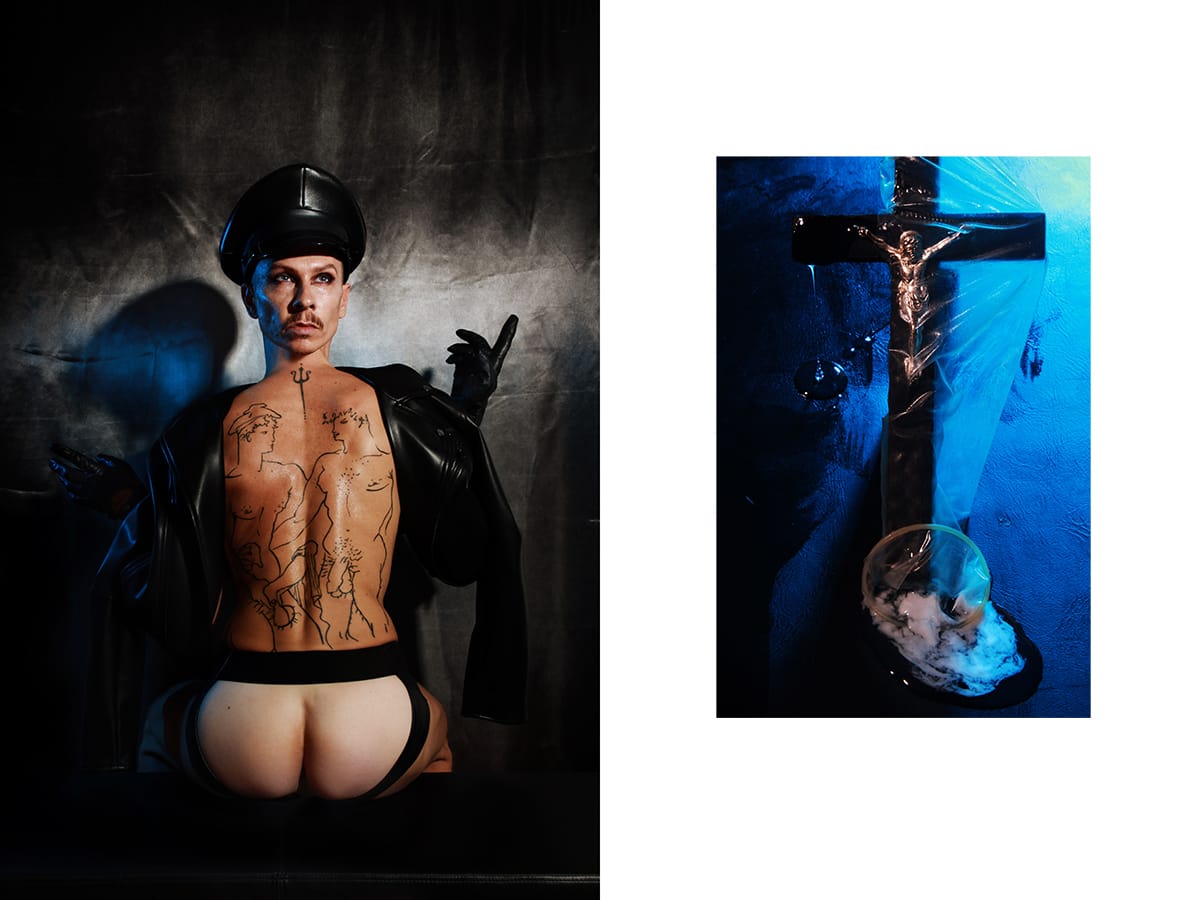
The research question that you're exploring is what a queer monument or memorial should look like in the 21st century - why do we need queer monuments?
To understand the meaning and mission of LGBTQIA+ monuments, whether they are dedicated to a historical event, a personality, a specific minority, or even AIDS victims, if we are interested in what individual monuments look like, we will certainly need to familiarise ourselves with LGBTQIA+ symbolism, terminology, and rhetoric from both a historical and geographical perspective.
When using symbols, we face the problem that they will not stand the test of time, will become outdated and unsuitable for the development of society and the demands of current minority communities. Ideally, such symbols will only be a valuable historical document placed in a museum with an explanatory description of when, why and how they were created and what they represented at that time.
A large number of controversial memorials or monuments to kings, warlords, presidents, or uprisings are often directly overthrown from their pedestals, as has happened recently.
For example, On June 9, 2020, Antwerp officials removed the statue of King Leopold II from the city district of Ekeren after it was defaced by protesters that were part of the Black Lives Matter movement. It is currently stored in the Middelheim Museum. The state has faced criticism for years, given that Leopold organised the colonisation and genocide of 10 million Congolese people.
Countless times throughout history we have witnessed monuments being torn down as the end of an era, as a protest, as an act of justice, or regained freedom, or conversely the beginning of dictatorship and the dark ages.
In many cases of LGBTQIA+ memorials and monuments themselves, we have witnessed vandalism, or even their demolition - such as the Rainbow Monument in Warsaw - precisely due to the retreat of democratic principles, the right of visibility of minorities in some countries.
It is extremely important here that in those countries where it is possible, LGBTQIA+ memorials are created and maintained in public spaces so that history does not repeat itself. And in those countries where the queer community is still repressed, criminalised, or even faces the death penalty, a temporary monument installation or memorial, for example, can function as a form of protest.
A memorial should not be only about representing the entire acronym of the LGBTQIA+ community, but also queer elders, queer people with disabilities, and individual minorities, whether it is, for example, the queer community of Roma and Vietnamese minority in the Czech Republic, or the Queer Afro-American population, queer refugees, and - last but not least - also Drag queens, sex workers, and social workers.
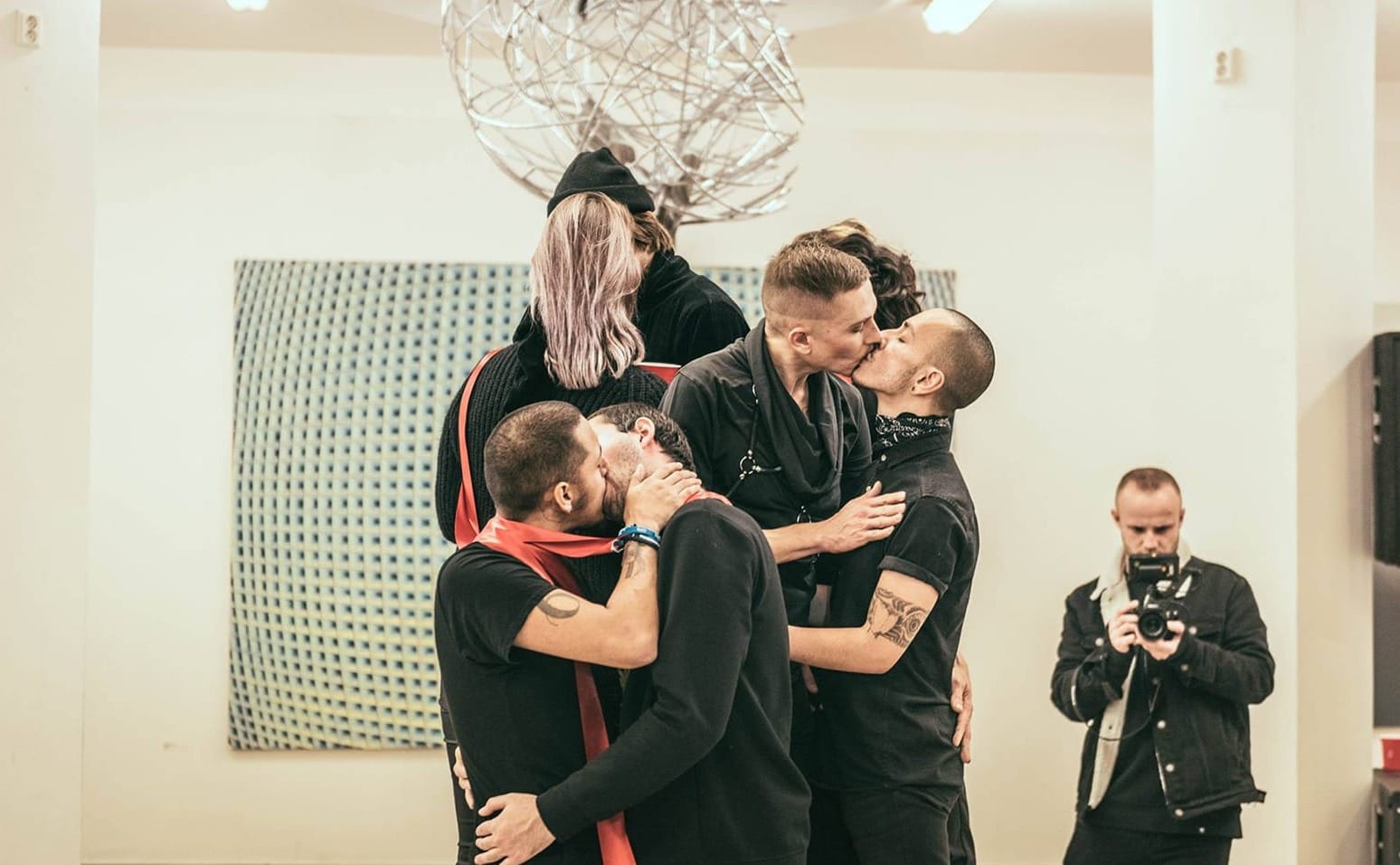
How does the different experiences of LGBTQ equality and visibility in different countries around the world shape our need for monuments and memorials?
This is a very complicated question!
During my research, I discovered one fundamental thing and it made me ask myself: Can the Queer Monument be global? What is the demographic of my research and output?
I have come across big differences and nuances between the queer community in the Czech Republic - where I come from - and in Spain where I live, but also in other countries I have visited. The queer community is different in each country, it has its own specific culture, language or slang, but also its own unique problems and therefore priorities.
This is actually the main reason why I started to deal with the topic of queer monuments, because while the first monument in the world was created in Europe in 1987 - in Amsterdam - and since then countless of them have been created not only in Europe, but also in the USA, Australia, and Latin America. However, looking east from the Czech border into the post-communist countries, no LGBTQIA+ monuments exist - even almost 30 years after the fall of the Berlin Wall.
This is undoubtedly because, unlike other European countries, we still do not have the same rights, legislation and protections. For example, in the Czech Republic we still do not have same-sex marriage, and - until very recently - trans people in the Czech Republic had to undergo sterilisation to change their identity. This barbaric law has been under consideration at the European Court for several years. And finally, since July of this year, changing gender on documents is possible without sterilisation surgery. So that is definitely a huge step, but this is exactly what I am talking about. Priorities of the LGBTQIA+ community differ in each Country.
I also often talk about how changing the legislation and the rights and protection of the LGBTQIA+ community is one thing, but it is only the beginning, because laws will not change society. Society changes with education, challenges of public conversation and with respecting each other and empathy. So it will be a long way to go to get to a Queer monument in the Czech Republic, but I want to at least start a public conversation about it.
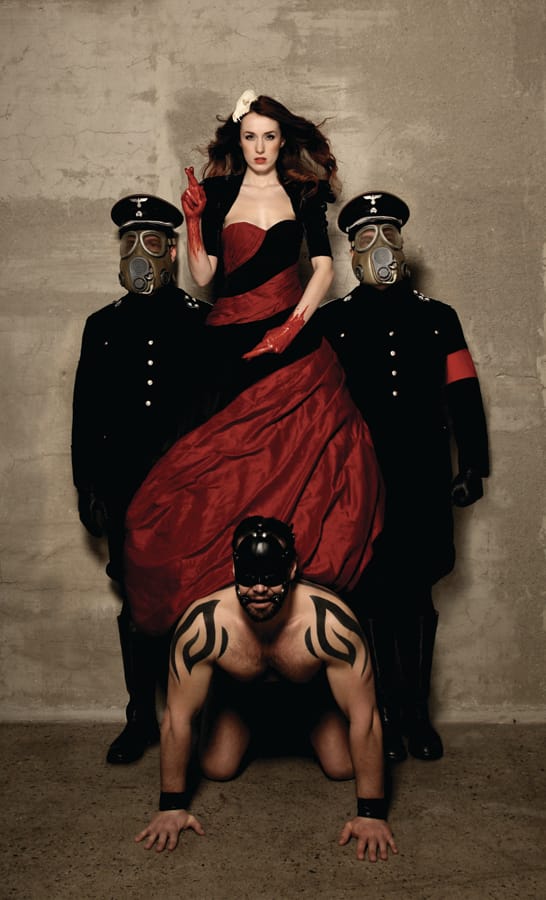
You've been working as an artist since completing your diploma - how does your art intersect with your perspective on queer history and memorialisation?
My work is unapologetically queer and sex positive.
Precisely because the queer community has been objectified, demonised and persecuted for our sexuality for centuries, it is necessary to be loud and visible.
My photographic work is therefore built on queer symbols, hidden codes and historical connotations through work with the body, intimacy and queer intimacy in public space.
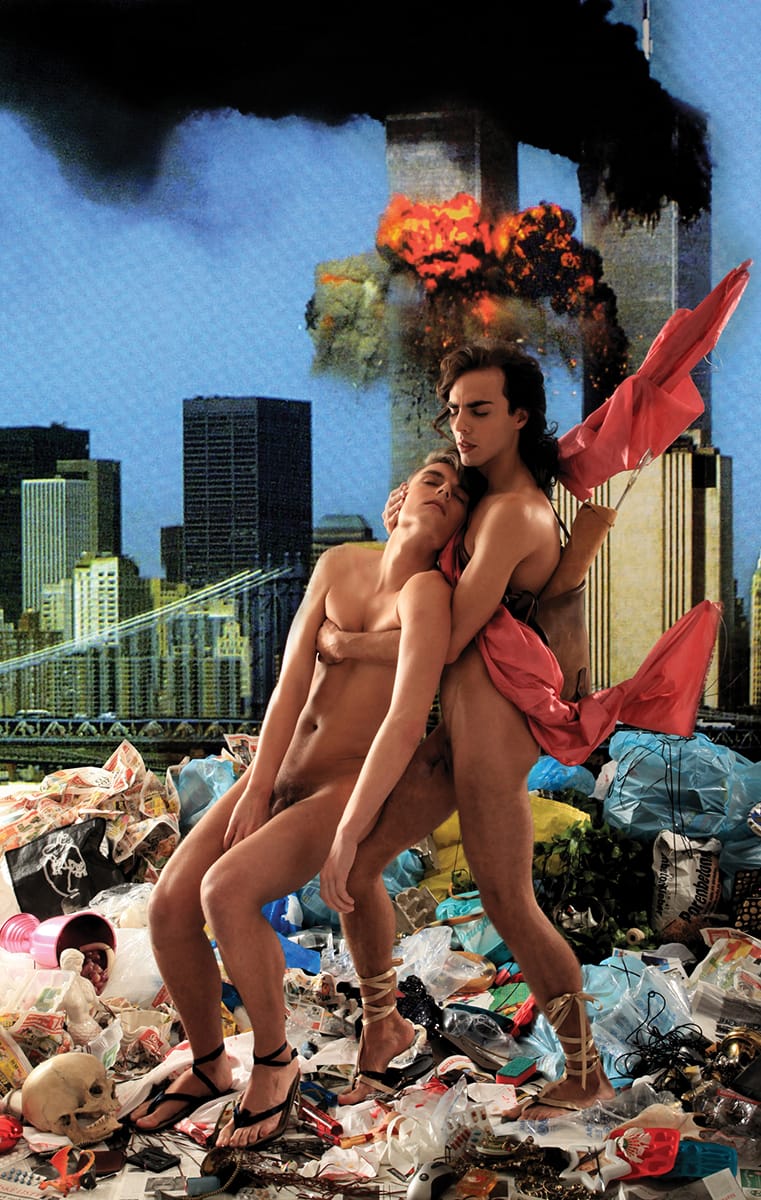
If you were in charge of designing a queer monument or memorial for Czechia, what would you create?
I have a certain theoretical vision of how the future monument should be inclusive, time-fluid and layered - meaning it should not only commemorate but also celebrate, to be a queer safe space for contemplation, healing, mourning, honouring and celebrating.
Even though I am a visual artist, I am not a sculptor, I am not an architect nor land artist. And I have come to the conclusion that for me, an artistic individualism is no longer valid, which is why my thesis is called the "Queer Collective Memorial" And so it is absolutely essential for me that the final form of the monument would be based on previous communication and agreement between LGBTQIA+ organizations, Queer artists and the public LGBTQIA+ community itself in cooperation with and supported by the government at a specific city or place.
If the first LGBTQIA+ memorial were to be created in the Czech Republic, I dare say that it would become a monument and memorial, both for its uniqueness and for achieving a certain acceptance of the LGBTQIA+ community by society as a whole, but above all for the so-called permanent embodiment of resilience, pride and therefore celebration of the LGBTQIA+ community itself in public space.
The need for artists to infiltrate queerness into art and public space is important for the creation of Queer Safe Spaces. I am convinced that the more queer symbols, visual codes and intimacy are introduced into public space through the modification of urban design in the form of art, performance and installation, the possibility of an imaginary bridging arises - a connection between queerness and the majority cis hetero society. Queer urban space modification, with its permanent and not one-time presence, has proven itself not only as a cause for the normalisation of queerness, its understanding, acceptance and respect by society as a whole, but above all the creation and connection of urban spaces into queer safe spaces, just as stations and metro lines help and facilitate the connection and accessibility of individual parts of the city to each other.
Queer spaces arise out of necessity, carved out of the urban framework to provide safety and visibility in a society that often marginalises non-heteronormative identities. They are not just shelters, but active centers for activism, expression and community engagement. The visibility these spaces provide is essential, enabling the affirmation of queer identity and fostering a sense of pride and belonging. They are places where resistance is palpable, where existing norms are challenged, and where new norms are envisioned and enacted. This resistance is directed not only against external societal pressures but also against the internalised invisibility imposed by mainstream culture.
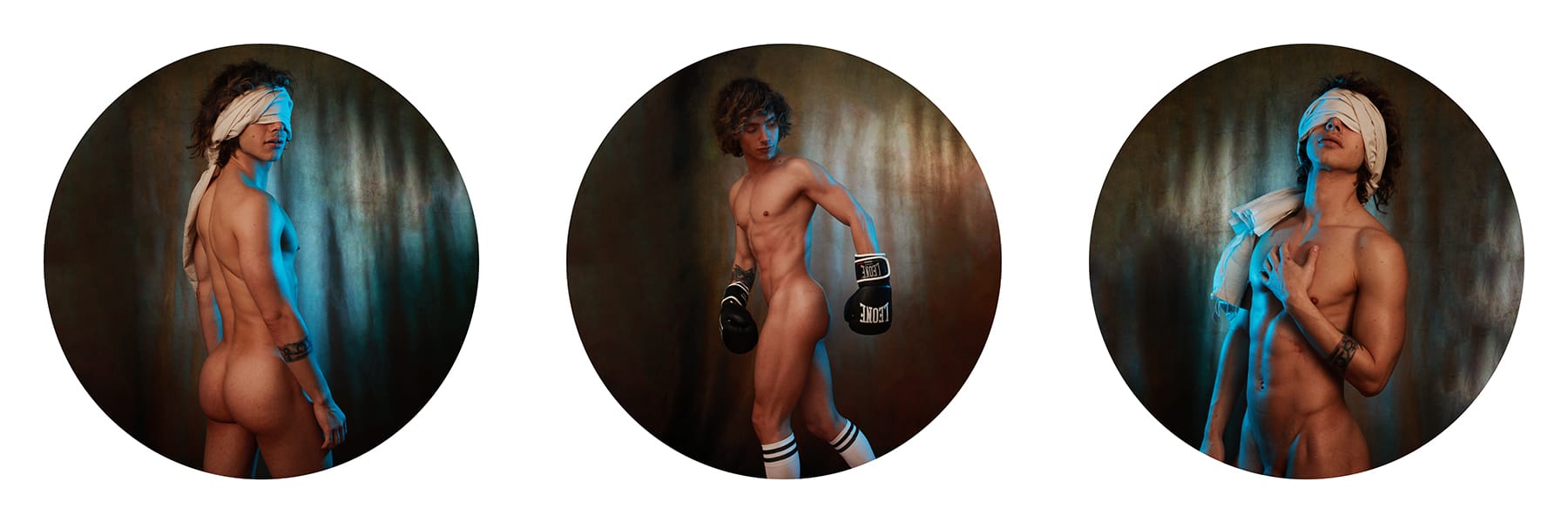
Inclusivity is a fundamental aspect of queer spaces, yet it remains a complex challenge. These environments aim to welcome everyone across the LGBTQIA+ spectrum, constantly evolving to meet intersectional needs, including those related to race, gender diversity, and economic disparities. The inclusivity of a space significantly impacts its ability to function as a true community hub that nurtures all its members and respects their diverse experiences and identities.
The role of queer spaces in building community is unparalleled. These spaces provide a foundation for personal and collective growth, where relationships are formed, support systems are established, and individuals find common strength to face the challenges of a predominantly heteronormative society. They are essential to the urban cultural scene, often initiating artistic and social trends.
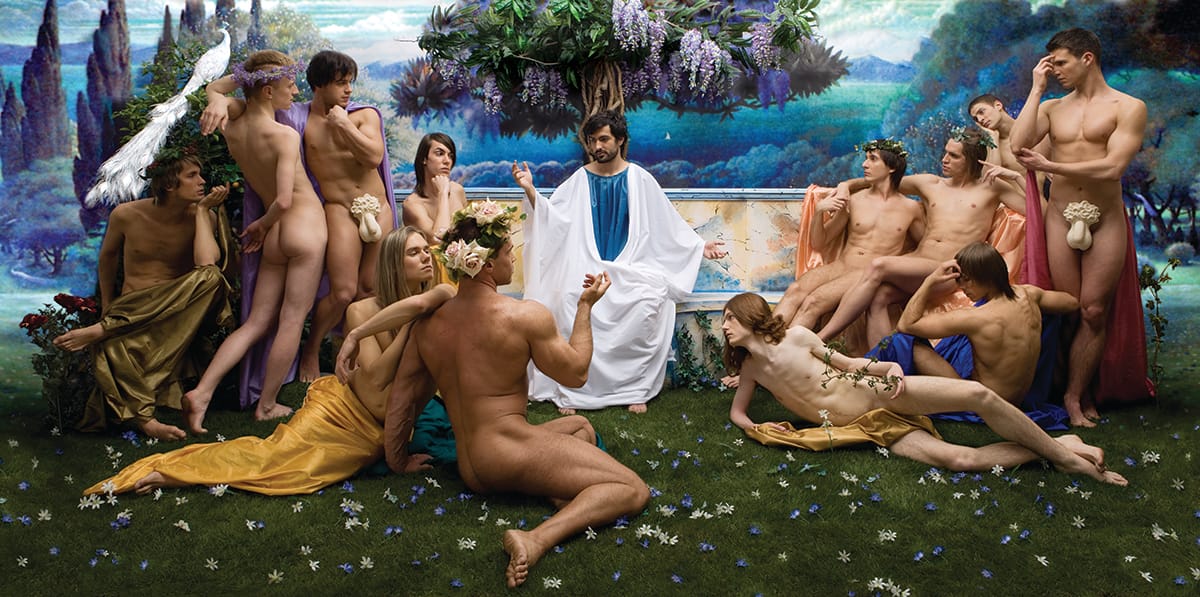
The impact of queer spaces on urban culture is profound and multifaceted, extending far beyond the art they inspire to influence the social, economic, and cultural dynamics of cities. The artistic output from these spaces—graffiti, performance, and installation—serves not only as an expression of identity, but also as a catalyst for community engagement, urban renewal, and social change.
Queer art forms emerging from these spaces play a vital role in strengthening community engagement. They create public forums where individuals from diverse backgrounds can communicate, feel safe, learn, and engage with LGBTQ+ culture. This visibility is essential for the normalisation and acceptance of queer identities within the broader urban fabric, helping to break down prejudices and misconceptions.
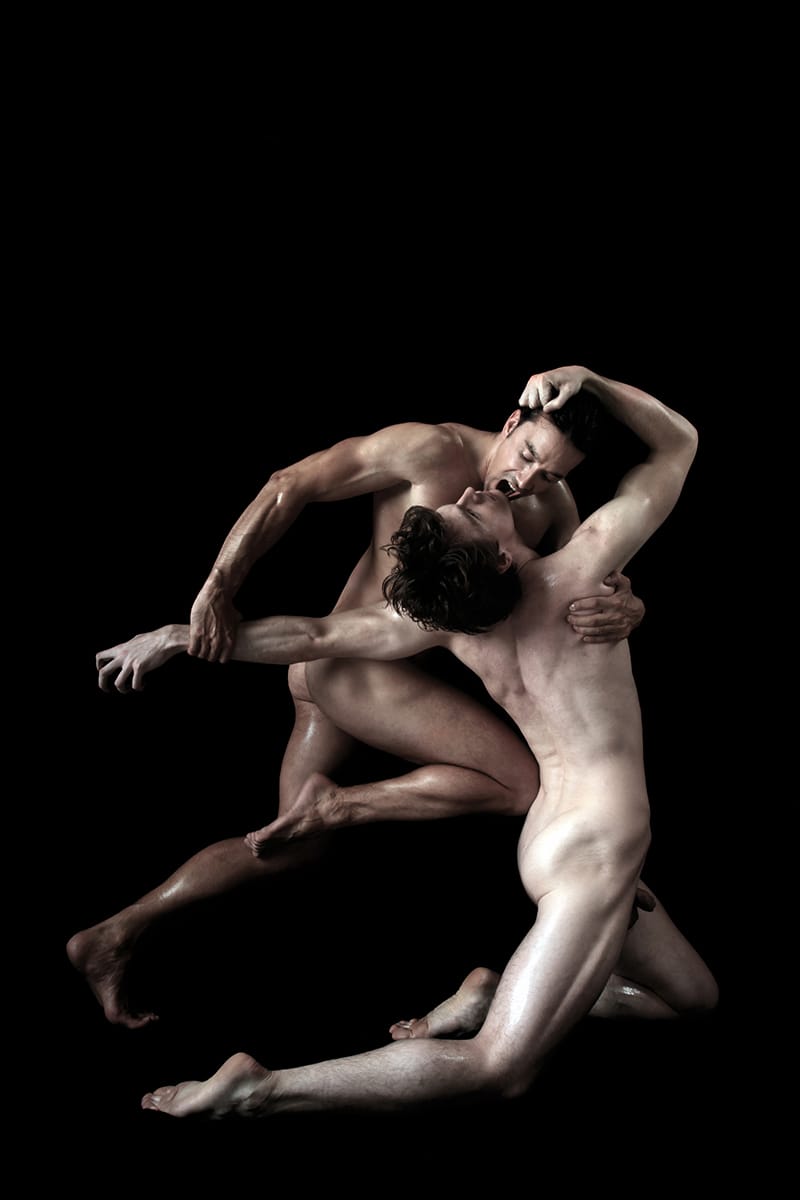
The presence of queer art in urban settings often leads to broader cultural shifts in cities. These art forms challenge traditional narratives and bring diverse perspectives to public discourse, thereby enriching the culture of the city. They can inspire other marginalized groups to claim their space in the urban landscape, leading to a more inclusive cultural dialogue.
Queer spaces and the art associated with them can be powerful tools for urban renewal. By drawing attention to neglected or underused areas, these artistic endeavours can spark revitalisation efforts that benefit the entire community. Public art projects can transform abandoned spaces into vibrant public squares and transform unattractive areas into bustling centres of activity and interaction.
Queer theory and culture have significantly influenced architectural design and urbanism by challenging traditional, normative concepts of space and identity. This theoretical framework supports a rethinking of design that goes beyond binary ideas about gender and sexuality, and promotes inclusivity and flexibility in architectural practices.
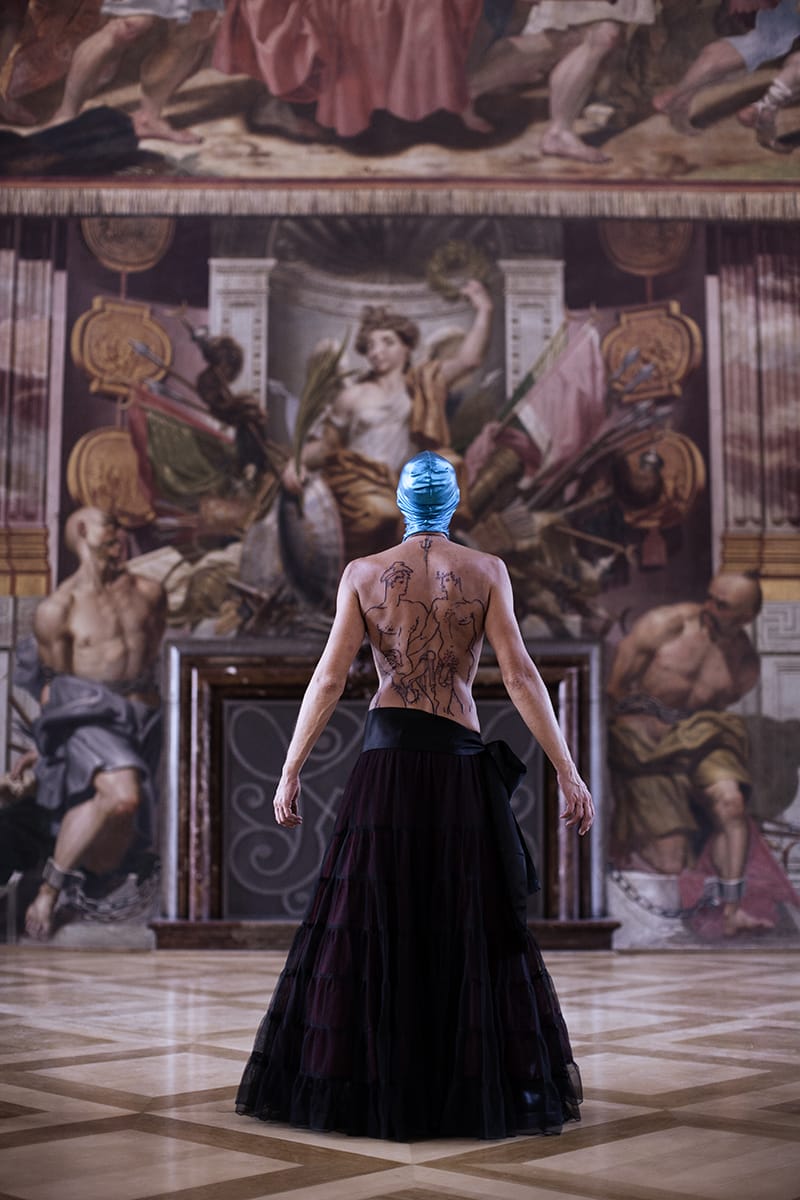
Public space should not only accommodate, but also actively affirm the spectrum of identities and support an environment where all individuals can feel valid and safe.
This is also the goal of the Queer Collective Memorial. To be not only a memorial and a monument, but an element that creates an inclusive environment and queer safe space in public space for the preservation of memory, honouring our predecessors, activists and heroes, who paved the way for our freedom and rights to where we are today, but also a space for celebration and pride of the LGBTQIA+ community 365 days a year and not just during the Pride month.
Follow Martin Kámen on Instagram
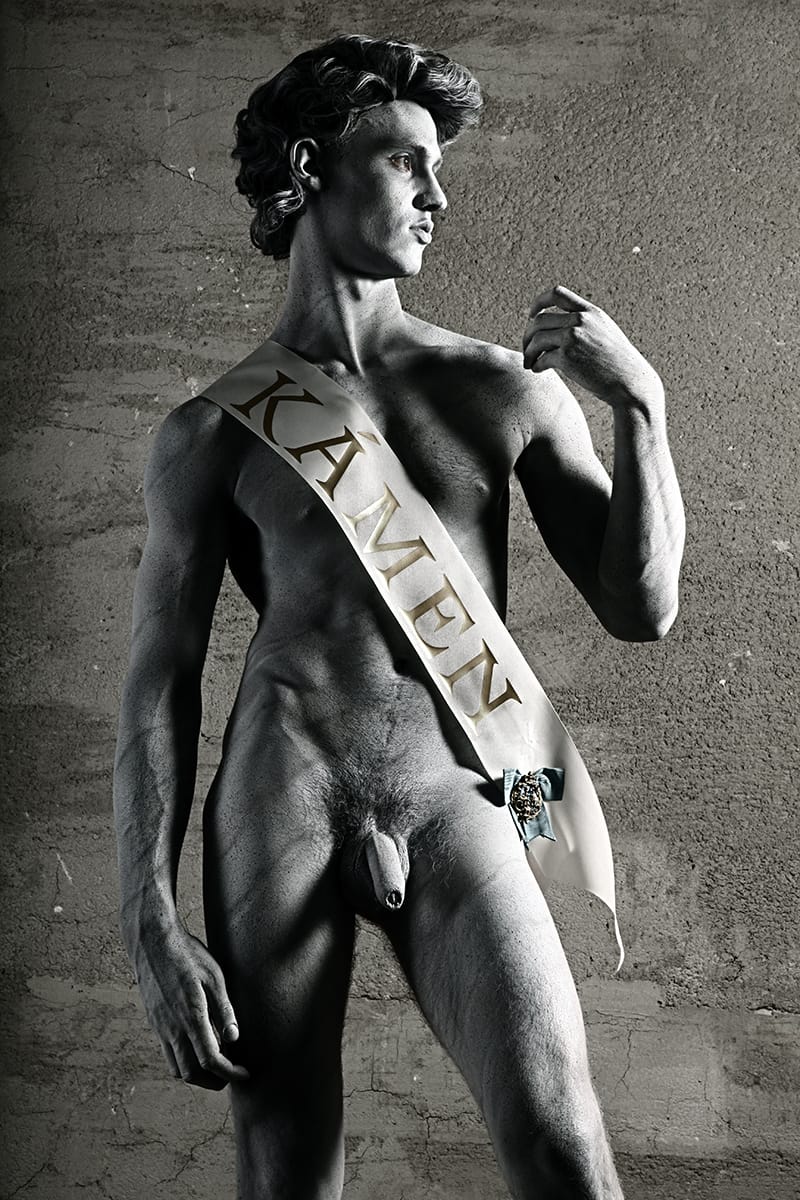
The NSFW edition
If you want to admire some man-on-man action, our NSFW edition gives you every inch.
Sign in and check out our NSFW content - it's free!
